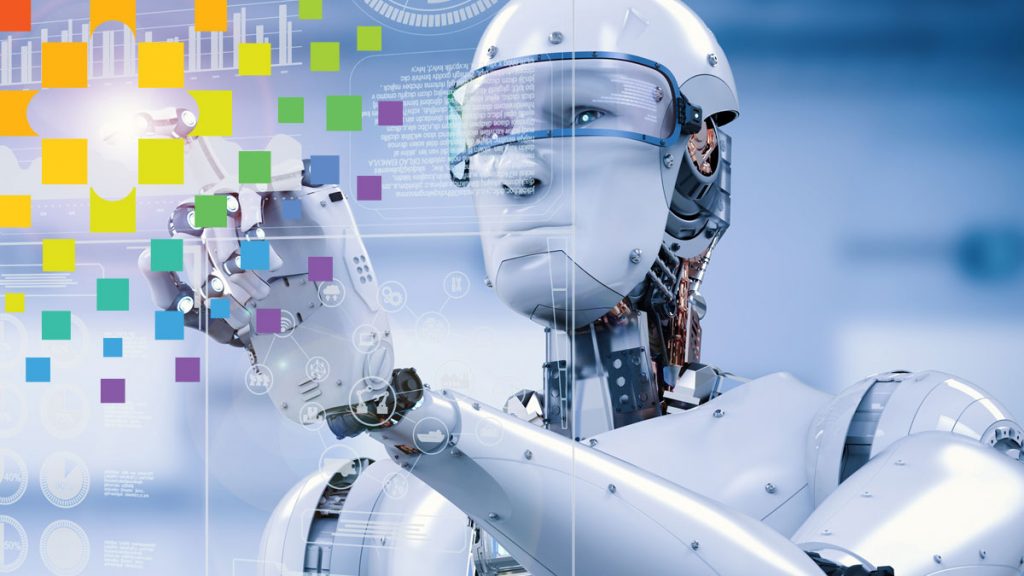This market research report was originally published at Tractica’s website. It is reprinted here with the permission of Tractica.
Much is written about robot systems, but what about the components that comprise these machines? Key technologies include the robot arms, grippers, actuators, sensors, vision systems, power systems, and controllers. The robotics market is experiencing a strong growth trend in conjunction with the surge of automation, smart manufacturing, and e-commerce fulfillment. This is driving demand for all robotic components. Let’s take a look at some of the technologies and key companies in this space.

(Source: ABB Robotics)
Robot Arms and Actuators
Robot arms are built from multiple rigid frames moved by actuators at each joint. The main types of actuators include rotary or linear electric motors that rotate or slide to flex each joint precisely and line up the arm and gripper for each task. Hydraulic cylinders are often used for heavy lifting in manufacturing and material handling. Other types of actuators include pneumatic, piezoelectric, memory alloys, thermal, hybrid, and magnetic.
Altra, Ewellix, Moog, Rockwell, and SMC are several of the leading providers of actuators for companies that manufacture robot arms and grippers. Robot arm providers include ABB, FANUC, Kawasaki Robotics, and KUKA. Some of the most innovative arms are the collaborative robots (cobots) from Universal Robots that can work safely alongside humans without major changes to infrastructure or processes.

(Source: Universal Robots)
End-of-Arm Tooling
Attached to the robot arm is an end-of-arm tool (EoAT) that does the actual work. These EoATs range from simple pinch grippers to multi-finger grippers to welding tips, grinders, glue guns, suction cups, and screw and bolt drivers. They are used for assembly, polishing, grinding, sanding, gluing, picking, packing boxes, loading pallets, and more.
Traditional grippers have stiff metal or plastic jaws that operate repeatedly and with high precision, like the ones from OnRobot, RightHand Robotics, and Stäubli. New use cases require grippers that can grasp delicate or soft materials or objects that vary in contour, size, or orientation. One example is Soft Robotics’ pneumatic grippers and soft jaws targeted at the logistics, food & beverage, and advanced manufacturing industries.

(Source: Soft Robotics)
Sensors and Vision Systems
A robot with no way to sense its position or environment is simply an automaton that performs movements blindly. Add position sensors and a robot can tell how far each actuator has traveled. Other important sensors detect force being exerted, location in 3D space, airflow, electric, current, displacement, heat, time, humidity, infrared light, magnetism, position, pressure, proximity, and temperature. Leading sensor companies include ATI, FUTEK, Honeywell, and InvenSense.
Add vision and a robot can detect the presence of a part or a person and perform quality inspection, polishing, welding, gluing, and more. One technology that is rapidly growing in popularity is 3D lidar. Expect to see cameras added to robot stations, arms, and EoATs and more lidar used for robotic and unmanned aerial vehicle (UAV) applications in the future. Cognex, FRAMOS, SICK, and Velodyne (the inventor of 3D lidar) are key providers of vision systems.

(Source: Velodyne)
Power Systems
None of these components can move without a power supply, either tethered power from the facility or battery power for mobile robots. Surgical robots and some other mission-critical robots often include both tethered power and batteries so they can move back to a neutral position if power is lost in the facility. Many robots also use standby batteries that back up factory settings or other settings. Power systems and batteries can represent a significant portion of the total cost for a robot. New developments in batteries are being pursued to produce lighter, smaller, more affordable power for mobile robots and UAVs. Leading companies include Cosel, Efore, IXYS, MEAN WELL, and Ultralife.

(Source: MEAN WELL)
Controllers
All of the above components are stationary unless they receive commands from a controller, the programmable brains that send precise amounts of power from power systems to control actuators and EoATs to move and perform tasks. Robot controllers are becoming increasingly integrated with the power system, sensors, cameras, industrial Internet of Things (IIoT), cloud processing, and storage through automation software platforms. A combination of precision controllers, motors, and sensors is also responsible for the repeatability and accuracy of robot actuators and EoATs. Leading companies in this space include ABB, FANUC, KUKA, Omron Adept, and Yaskawa Motoman. Expect to see controllers become more integrated and intelligent and provide more precise control as this technology evolves.

(Source: Yaskawa)
The Future of Robotic Components
Numerous factors will continue to drive rapid growth in the global robotic components market. The development of better robotic components, combined with intelligent management software platforms, promises to stimulate the market. Growing awareness of the usefulness of robots, especially cobots, and the ease with which they can be integrated, as well as their rapid ROI, will continue to fuel demand for the foreseeable future. Such growth will create many opportunities for both traditional industrial robotic component companies and new startups wishing to establish a foothold in the robot space.
You can learn more in Tractica’s upcoming Robotics Components report detailing the market, technology, major players, and component-level forecasts for the robotic components industry. Watch this page for the release of this new industry report scheduled for 1Q 2020.
Glenn Sanders
Senior Analyst, Omdia | Tractica


